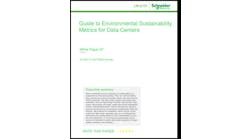How Bare-Metal Cloud Options Benefit Enterprises
As enterprise workloads rapidly move to the cloud, there are some applications that struggle in this new multi-tenant environment. They simply can’t tolerate the inherent variability and performance penalties within. That’s why bare-metal computing options are becoming increasingly popular with organizations looking to migrate performance- or location-sensitive workloads to the cloud. This launches our special report series on how “Bare-Metal Computing Leads a Changing Cloud Landscape.”
Get the full report.
The swift migration of enterprise workloads to cloud infrastructure shows no signs of slowing. More than 80% of respondents to IDG’s 2020 Cloud Computing Study said they already have some applications in the cloud and 69% of large corporations said they have migrated most or all of their applications. Gartner expects global spending on public cloud to grow 23% in 2021 and nearly 20% in 2022 to nearly $400 billion.
One of the key technical underpinnings of cloud environments is multi-tenancy, a software architecture that enables several users to share the same physical infrastructure and applications. Based on virtualization technology, multi-tenancy allows cloud infrastructure providers to drive high server utilization rates that yield cost savings that are passed on to their customers. The highly virtualized nature of cloud infrastructure also gives customers the flexibility to provision their virtual servers at will with very rapid deployment and usage-based pricing.
While most applications adapt well to virtualized environments, there are some performance penalties IT leaders should take into account when deciding which applications to move to the cloud. The hypervisor, which is essentially a lightweight operating system that emulates the physical machine, consumes some resource overhead, particularly if the application is CPU-bound. A less predictable and potentially more disruptive performance penalty comes from the “noisy neighbor effect.” This occurs when one workload begins consuming a large number of available resources such as network capacity and memory, thus choking off other workloads from the resources they need.
These factors are a structural element of multi- tenant environments that can’t be avoided. While most workloads can tolerate some levels of variability, performance-sensitive applications like online transaction processing and artificial intelligence model training need every ounce of machine power. Organizations that are looking to migrate performance- or location-sensitive workloads to the cloud are increasingly looking into bare metal cloud options.
What is bare metal cloud computing?
Bare-metal cloud computing is, as the term suggests, unadorned compute, storage, and networking that customers may configure according to the needs of their workloads. It’s similar to compute infrastructure you would buy to install in your data center or that of a co-location provider, but cloud computing has redefined bare-metal around a new set of constructs anchored by much higher levels of automation and customer flexibility.
Because the instance is single-tenant with no virtualization overhead, there are no performance penalties or noisy neighbor problems.
In an on-premises or colocation scenario, customers own the equipment and either furnish their own facilities and connectivity or license those features from the colocation provider. In a bare-metal cloud computing model, the hosting provider owns the equipment and provides access to customers on a subscription basis. All the physical server resources are dedicated to a single customer for whatever uses they require.
Because resources are not shared, no hypervisor layer is needed, allowing the full processing power to be allocated to the application. And because the instance is single-tenant with no virtualization overhead, there are no performance penalties
or noisy neighbor problems.
A staged consumption model gives customers flexibility to specify how much server power they need and to upscale and downscale capacity as appropriate, paying only for what they use. Customers choose whatever elements of the operating environment they prefer with installation and configuration handled by the cloud provider. Availability is guaranteed and service-level agreements may be available.
Although relatively young, the bare metal cloud market is primed for rapid growth. ResearchandMarkets expects the global market to grow 24% annually to $16.4 billion by 2026, up from $4.5 billion in 2020.
Download the full report, “Bare-Metal Computing Leads a Changing Cloud Landscape,” courtesy of phoenixNAP and Intel to learn more about bare-metal computing. In our next article, we’ll take a closer look at how bare-metal computing is most commonly deployed and why it’s gaining momentum.





